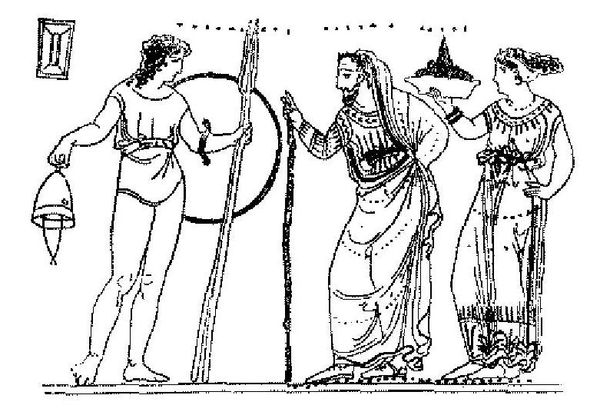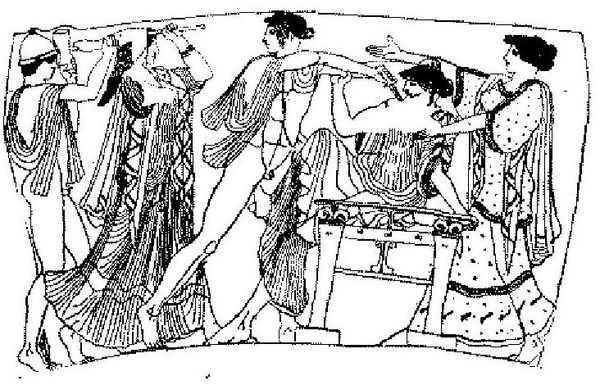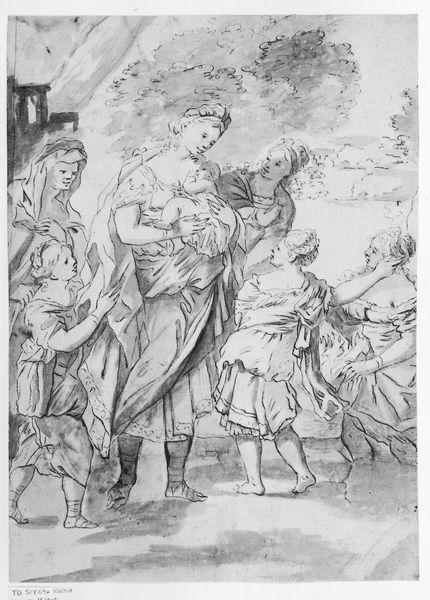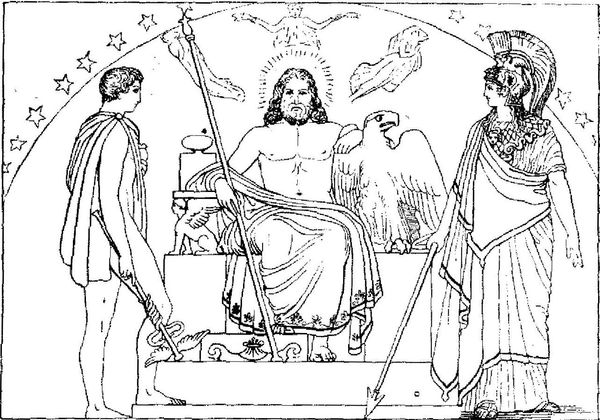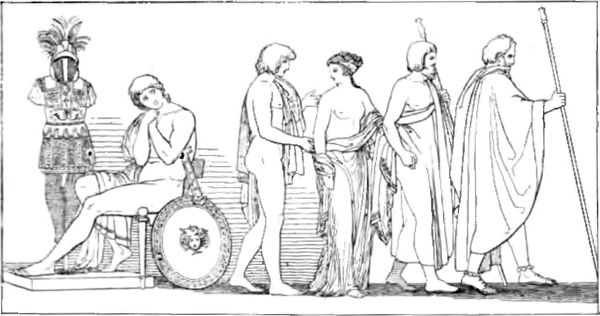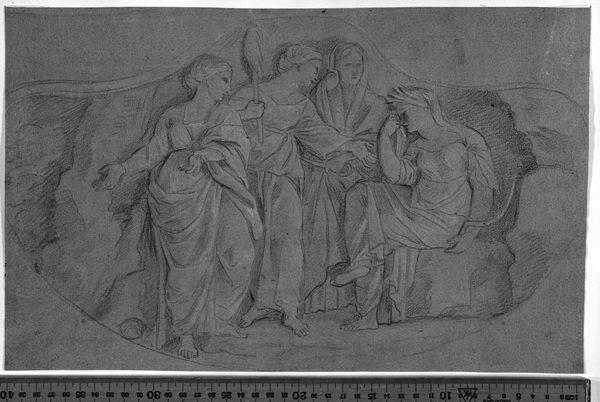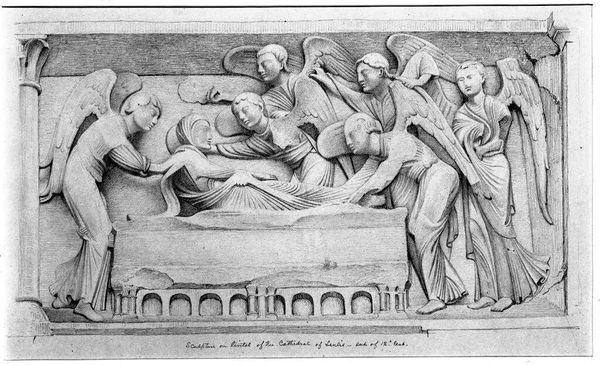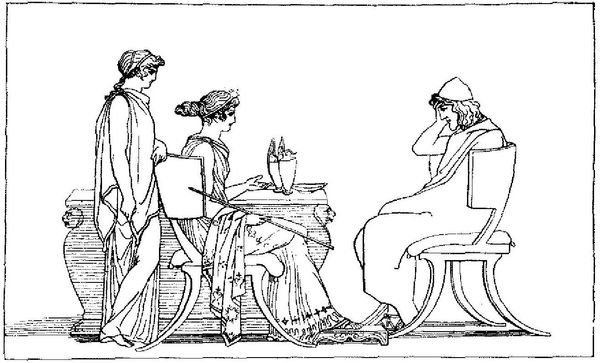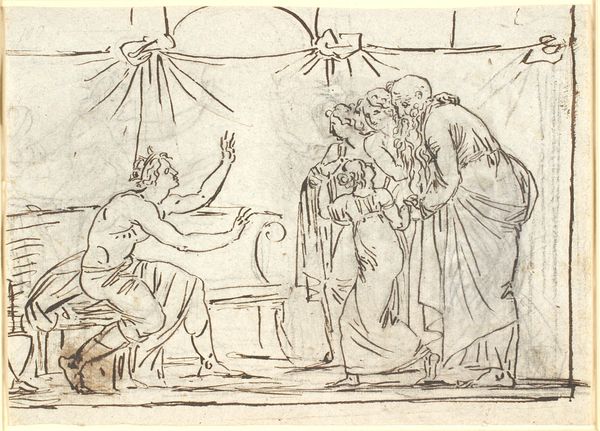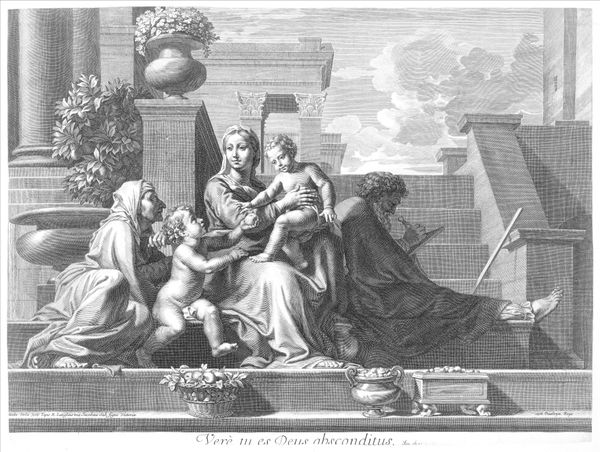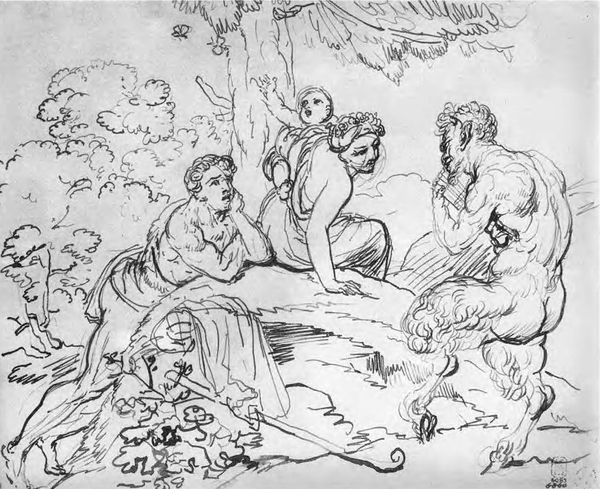
drawing, print, paper, ink
#
drawing
#
neoclacissism
#
allegory
# print
#
greek-and-roman-art
#
landscape
#
classical-realism
#
figuration
#
paper
#
ink
#
ancient-mediterranean
#
line
#
history-painting
Copyright: Public domain
Editor: Here we have John Flaxman's "The Judgment of Paris. Illustration to the Iliad," from 1795, rendered in ink on paper. It's a strikingly simple line drawing, very classical in style. I'm immediately drawn to the almost unsettling stillness, a kind of calm before the storm, knowing the implications of this seemingly innocent exchange. What do you see when you look at it? Curator: I'm captivated by the stark beauty of Flaxman's line work; it’s so direct, so uncluttered. You're right about the stillness, it feels pregnant with impending doom. Flaxman, working in the Neoclassical period, really strips away any excess, distilling the narrative to its purest form. It's as if he's inviting us to fill in the emotional blanks, isn't it? Editor: Absolutely. I was also struck by the contrast between the almost casual pose of Paris offering the apple, and the gravity of the moment. It feels so…understated. Curator: That's the beauty of it, isn't it? This understatedness throws the entire narrative weight on the viewer. There's Mercury lounging almost bored, a dog just observing without any clue of the catastrophic consequences; Cupid looking away disinterested; they add layers to our emotional engagement. Also, what do you make of Flaxman choosing to depict the goddesses without much in way of distinctive personality? Editor: It's curious, they seem like archetypes more than individuals. Almost like vessels for the ideas of beauty, power and wisdom rather than characters in themselves. Curator: Precisely. He emphasizes the abstract concepts they represent over any individual identity. Their motivations hardly seem important here, its the *act* itself which propels the tale to its terrible end. Flaxman reduces everything down to this single loaded moment. Editor: I never really considered how much the artist makes us active participants in completing the narrative. It is sparse, but its also rich. Thanks! Curator: And thank *you* for such astute observations. Thinking of narrative weight, visual choices...these prints continue to beguile!
Comments
No comments
Be the first to comment and join the conversation on the ultimate creative platform.
